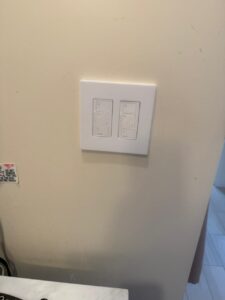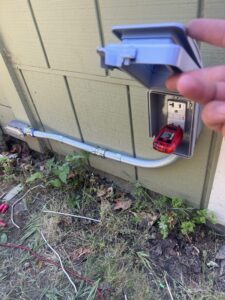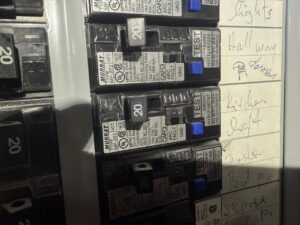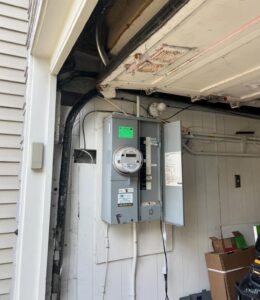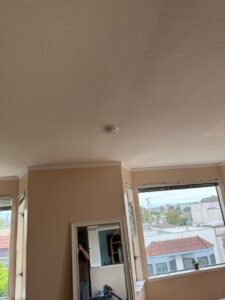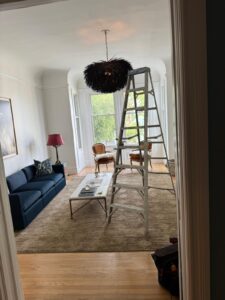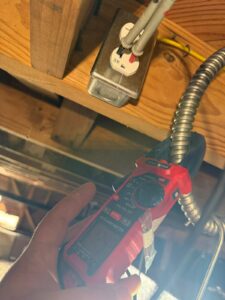Outlets & Switches — Safe, Clean, and Built for Daily Use
Sometimes it’s the little things that make the biggest difference. A loose outlet, a switch that sparks, or plugs that don’t hold right — all of that adds up to stress you don’t need. I treat outlets and switches like core safety gear, not décor: they should be solid, safe, and feel right every time you use them.
Why It Matters
Worn outlets and tired switches aren’t just annoying — they can overheat, arc, and damage electronics. In older Bay Area homes (including SF Victorians and Pacifica’s mid-century houses), I often see two-prong outlets, back-stabbed connections, shared neutrals, and tired breaker panels that were never designed for today’s loads.
Common Issues I Fix
- Loose or hot outlets (plug falls out, faceplate warm to the touch).
- Sparking or crackling switches, especially on older toggles and dimmers.
- Two-prong (ungrounded) receptacles in vintage apartments and older homes.
- GFCI trips in kitchens/baths/garages or GFCIs missing entirely.
- Outdoor outlet failures from fog, salt air, and moisture (Pacifica problem #1).
- USB/Smart outlets installed without proper box fill or circuit capacity.
What I Do (Straightforward & Clean)
- Replace two-prong and loose receptacles with grounded, tamper-resistant (TR) outlets.
- Install and properly locate GFCI (kitchens, bathrooms, garages, outdoors) and WR/TR (weather-resistant/tamper-resistant) outdoor outlets.
- Fit smart outlets & switches, USB combo receptacles, and modern dimmers with correct load/LED compatibility.
- Correct back-stabbed connections, overfilled boxes, and messy splices with solid terminations and proper boxes.
- Fix multi-wire branch circuit issues (shared neutrals) and label everything clearly at the panel.
- Troubleshoot nuisance trips, intermittent power loss, and arcing — then repair, not just reset.
Pacifica & Coastal Details
On the coast, salt air + fog chew through outdoor devices. I use WR/TR outlets, sealed in-use covers, weatherproof boxes/conduit, and corrosion-resistant terminations. For beach-adjacent homes (Linda Mar, Sharp Park, Rockaway), that’s the difference between a one-season fix and a long-term solution.
Safety & Modern Upgrades
- GFCI protection: kitchens, bathrooms, garages, laundry, outdoors.
- AFCI protection at the panel for living areas (helps catch arc faults from worn cords/outlets).
- TR (tamper-resistant) outlets in family homes.
- Smart controls: motion sensors for garages/halls, smart dimmers for living areas, scene control.
- USB-C/USB-A outlets where you actually charge devices (bedside, office, kitchen island).
Repair vs Replace — How I Decide
- Repair when the device is newer but miswired or loose; fix terminations, correct box fill, re-terminate neutrals/grounds.
- Replace when the device is worn, heat-stressed, cracked, two-prong, or not WR/TR where required.
- Investigate upstream if symptoms suggest panel/circuit problems (frequent trips, dimming under load, shared neutral headaches).
Older Homes & Apartments — What I See
- Two-prong outlets with no ground; cloth or aluminum branch wiring (60s–70s).
- Back-stabbed switches causing heat and intermittent faults.
- Shared neutral (MWBC) without tied breakers — mystery trips & flicker.
- Overloaded circuits (microwave + toaster + coffee on one 15A line).
When needed, I’ll recommend panel upgrades or targeted wiring repairs so outlets and switches don’t mask deeper issues.
Popular Add-Ons
- Lighting upgrades: recessed, under-cabinet, stair/driveway, garage task lighting.
- EV charger prep: dedicated 20A/40A/50A circuits so outlets don’t carry charging loads they shouldn’t.
- Appliance circuits: dishwashers, microwaves, laundry — fewer overloads, fewer trips.
FAQ
Do I need to replace all two-prong outlets?
Not always. We can replace them with grounded outlets if a ground is present, add GFCI with proper labeling, or run a new grounded circuit where safety demands it.
Why do my plugs fall out?
The spring contacts inside the receptacle are worn. Replacement is the safe fix — worn contacts overheat and can arc.
Can I use any dimmer with LED?
No. Dimmers must be compatible with the LED driver and total load. I match the dimmer to your fixtures to avoid flicker and buzz.

